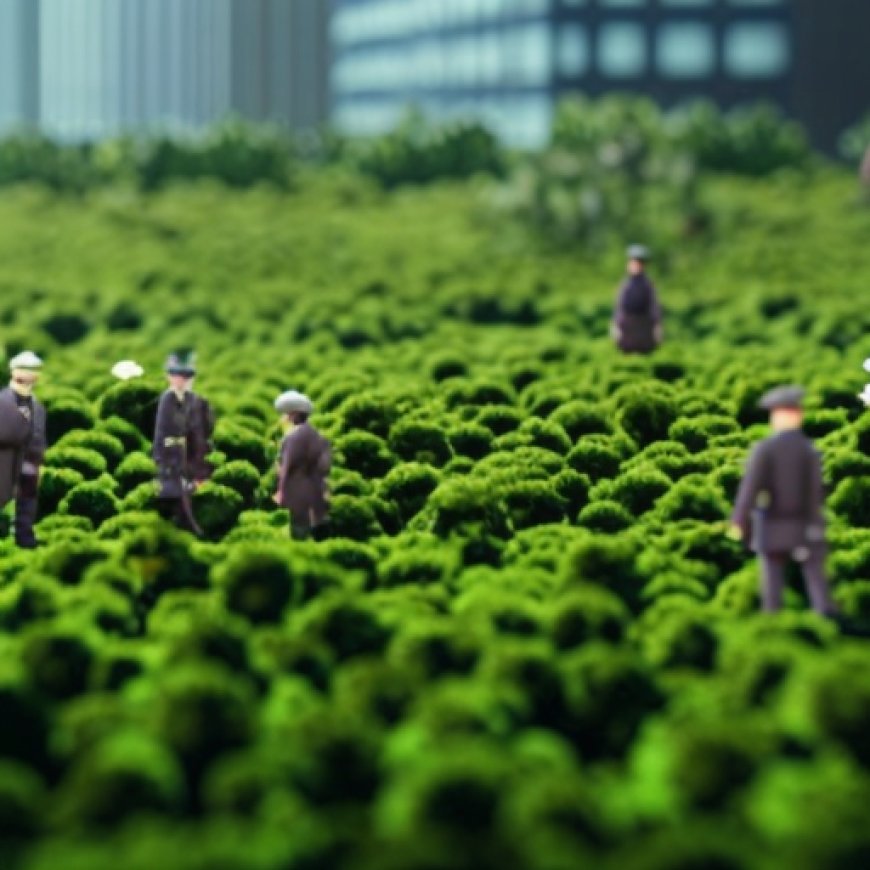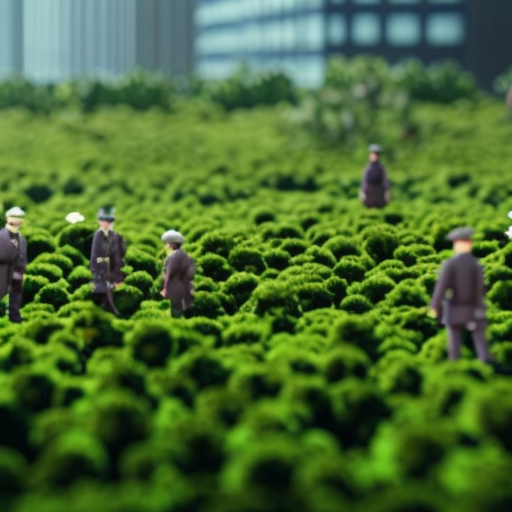New Yorkers planted a tiny forest in a spot where the city used to warehouse prisoners and smallpox patients
Volunteers plant tiny, dense forest on Manhattan's Roosevelt island Business Insider


New Yorkers planted a tiny forest in a spot where the city used to warehouse prisoners and smallpox patients
Economy
By Eliza Relman | 2024-04-14T09:32:01Z
Image Source: Eliza Relman/Business Insider
Summary:
- New York City got its first tiny forest, planted on Roosevelt Island on April 6.
- The planting method, developed by a Japanese botanist, uses minimal land to maximum effect.
- The effort is designed to both boost biodiversity and connect the community.
On a chilly Saturday morning in early April, a few hundred people gathered in a park on Roosevelt Island, a skinny strip of land in New York City’s East River, to dig around in the dirt.
The occasion was the creation of New York City’s first tiny forest, a planting method developed by the prominent Japanese botanist and ecologist Akira Miyawaki that’s designed to accelerate dense growth to promote biodiversity. Volunteers had signed up to help plant 1,500 native trees and shrubs on a 4,000-square-foot plot on the southern end of the island.
“The idea is very simple, it’s to bring back what was once there,” said Elise Van Middelem, the founder and CEO of SUGi, an international foundation behind the effort.
The small, dense plot of greenery is just the newest feature on an island that’s undergone many transformations.
Before a Dutch colonist bought the strip of land in 1637, it was home to the Lenape people, who called the land Minnehanonck. In the late 1660s, the land was acquired by a British captain whose descendants eventually used it for farming and renamed it Blackwell’s Island. When the city took it over in 1828, it built a penitentiary, the New York City Lunatic Asylum, and a smallpox hospital on what became known as Welfare Island.
Curtis Zunigh of the nonprofit Lenape Center told attendees at the planting that the mini-forest is an opportunity “to reverse the process of many generations that have threatened the existence and the wellness of this land and our collective spirit.”
US Rep. Jerry Nadler, who represents the island, said the forest is a way to combat the climate crisis. “Let’s not stop here. Let’s make the Manhattan Healing Forest a model for expanding green spaces across our city.”
The island was fully
SDGs, Targets, and Indicators
SDGs Addressed:
- SDG 15: Life on Land
Specific Targets:
- Target 15.2: By 2020, promote the implementation of sustainable management of all types of forests, halt deforestation, restore degraded forests and substantially increase afforestation and reforestation globally.
Indicators:
- Indicator 15.2.1: Progress towards sustainable forest management
- Indicator 15.2.2: Proportion of important sites for terrestrial and freshwater biodiversity that are covered by protected areas, by ecosystem type
The article discusses the planting of a tiny forest on Roosevelt Island in New York City, which aligns with SDG 15: Life on Land. The specific target that can be identified is Target 15.2, which aims to promote sustainable forest management and increase afforestation and reforestation. The indicators mentioned in the article that can be used to measure progress towards this target are Indicator 15.2.1, which measures progress towards sustainable forest management, and Indicator 15.2.2, which measures the proportion of important sites for biodiversity that are covered by protected areas.
| SDGs | Targets | Indicators |
|---|---|---|
| SDG 15: Life on Land | Target 15.2: By 2020, promote the implementation of sustainable management of all types of forests, halt deforestation, restore degraded forests and substantially increase afforestation and reforestation globally. | Indicator 15.2.1: Progress towards sustainable forest management Indicator 15.2.2: Proportion of important sites for terrestrial and freshwater biodiversity that are covered by protected areas, by ecosystem type |
Behold! This splendid article springs forth from the wellspring of knowledge, shaped by a wondrous proprietary AI technology that delved into a vast ocean of data, illuminating the path towards the Sustainable Development Goals. Remember that all rights are reserved by SDG Investors LLC, empowering us to champion progress together.
Source: businessinsider.com

Join us, as fellow seekers of change, on a transformative journey at https://sdgtalks.ai/welcome, where you can become a member and actively contribute to shaping a brighter future.







